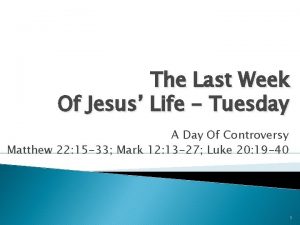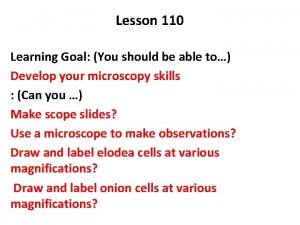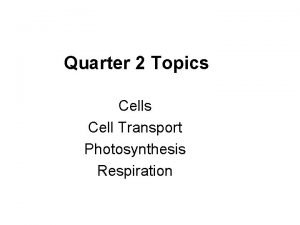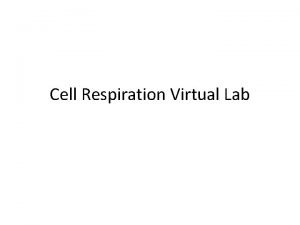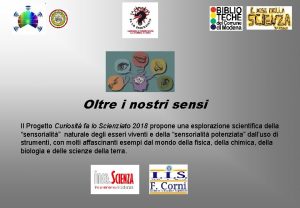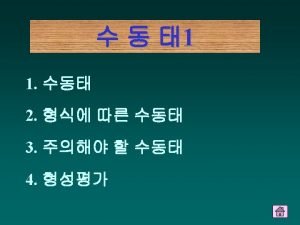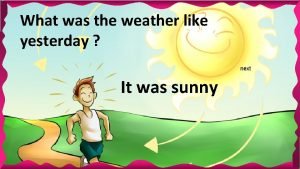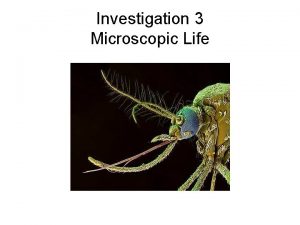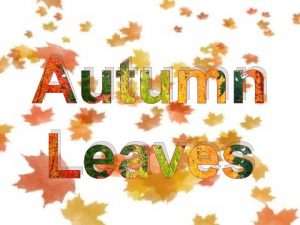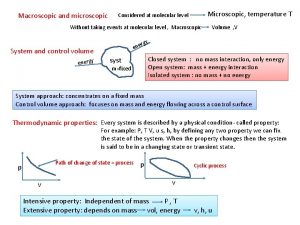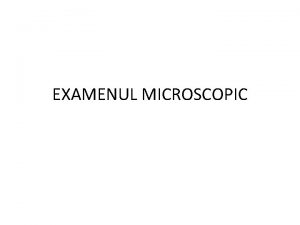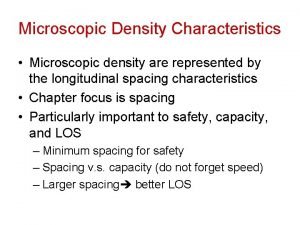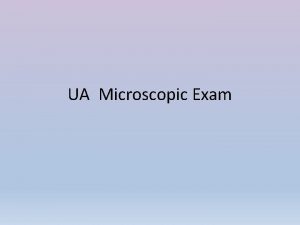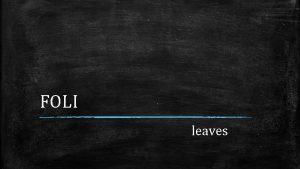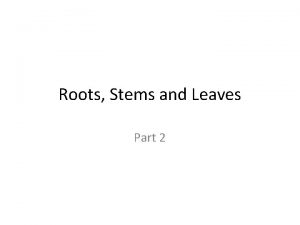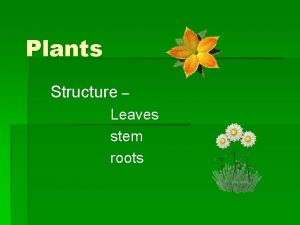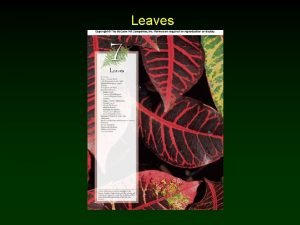Microscopic Life Day 1 Elodea Leaves Last week
















- Slides: 16

Microscopic Life

Day 1 - Elodea Leaves � Last week we looked at our cheek cells under the microscope � Today, we are going to be looking at a different kind of microscopic life � Open your folders to page 15

Page 15 � Start with 100 x magnification � Describe what you see � Increase to 400 x magnification � Describe what you see and draw it in the field of view � Estimate the size of the cells in the leaf Record any additional observations

Slide set up � Get a slide and a dropper from your microscope kit. � Bring it to the Elodea station � Break off half a leaf from the stem � Place the leaf, top side up, on your slide � Using your dropper, add a drop of the Elodea water to your slide � Cover with a coverslip

Discussion � What do you see when you look at the Elodea? � Do the cells look empty? � How many layers of cells do you see? › 2, one large and one small

Discussion Continued � Are all of the Elodea cells the same size? › No, some are big and some are small � Are the cells on the large cells on the top of the leaf or bottom of the leaf? › The larger cells are on top � How big are the Elodea cells? › The larger ones are about 0. 1 mm and the smaller ones are about 0. 05 mm

Day 2 - Paramecium Slide set up � Use a dropper to collect some water from the bottom of the paramecium container � Add 1 drop to your slide � Place a VERY SMALL amount of spread out cotton on top � Cover with a cover slip

Finding the Paramecium � Start on 40 x and look for tiny ovals moving around � Open to page 16 of your notebook and answer the questions � After you find your paramecium, change the lighting using the diaphragm to see different details

Discussion � What movements did you observe? › The paramecium was moving around the slide and there were moving circles inside the paramecium � What did you see on the inside of the paramecium? › Blobs, circles, dark areas � What did you see on the outside of the paramecium? › Little legs or hairs � How big was the paramecium? › Less than 0. 5 mm

� Are they living or nonliving? › living � What is your evidence? › They are moving � Could you see it eat or use energy? Give off waste? Reproduce? › no � What might we do to see some of these activities? › Feed them

Protists Paramecia are single-celled organisms in the Protista kingdom � In Greek, proto means early and protist means the very first � The single-celled organisms like paramecia are members of a kingdom of life that are similar to some of the very first life-forms on Earth. � Protists are not animals, animals are always multicellular � Protista is a separate kingdom whose members are mostly single-celled �

Living vs. Organism � Each Elodea cell is living while the paramecia cell is an organism. � The Elodea cells stay in one place; paramecia move around � Elodea cells are stuck together; paramecia cells are alone � Elodea cells are part of a bigger organism; paramecia are not

Paramecia Feeding � Prepare a wet mount of paramecia with cotton just like before. � Add one drop of the Congo red-dyed yeast � Add the cover slip � Locate a paramecium and look for evidence that it is eating yeast � Observe first at 100 x and then at 400 x. Record observations in words and illustration

Color Change � Congo red does two things � It makes the yeast easier to see � It also acts as an acid indicator � What happened when acid was added to the Congo red? � How can Congo red be used as an indicator?

Things to think about Paramecia do not have legs or fins. How do you think they move around? � How do the paramecia get the yeast inside their bodies? � Do paramecia have mouths? � How do paramecia get rid of waste? � What keeps the paramecium’s insides from spilling out? � What does the yeast look like inside a paramecium? �

Let’s Talk � What did you observe? � If you noticed bubbles inside the paramecium getting bigger and then appearing to burst, those are called waterexpelling vesicles � Hairlike structures covering exterior of the paramecia are called cilia and help the paramecia move
 Day 1 day 2 day 3 day 4
Day 1 day 2 day 3 day 4 Tuesday last week
Tuesday last week Day 1 day 2 day 817
Day 1 day 2 day 817 Bromothymol blue lab
Bromothymol blue lab Onion cell parts
Onion cell parts The bubbles released by elodea contain mostly
The bubbles released by elodea contain mostly Photosynthesis and cellular respiration virtual lab
Photosynthesis and cellular respiration virtual lab Elodea canadensis microscopio
Elodea canadensis microscopio Week by week plans for documenting children's development
Week by week plans for documenting children's development A small airplane leaves an airport on an overcast day
A small airplane leaves an airport on an overcast day What did you do last weekend essay 150 words
What did you do last weekend essay 150 words Weekend
Weekend Window was
Window was Your friends play football yesterday
Your friends play football yesterday Your bff is going to a party this weekend
Your bff is going to a party this weekend What was the weather like last week
What was the weather like last week I blank finish my homework last night
I blank finish my homework last night

